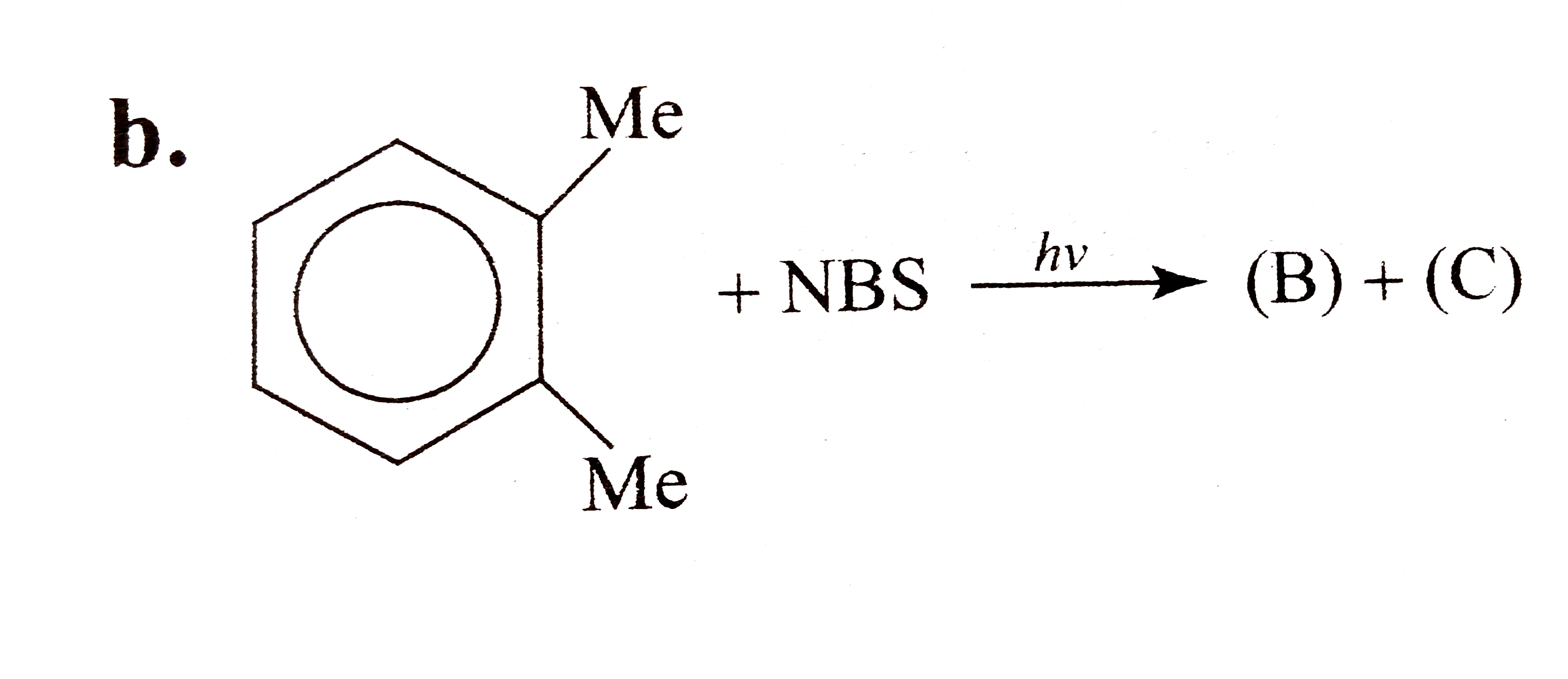Decarboxylation of all six possible forms of diaminobenzoic acids C6H3(NH2)2COOH yields three products A, B and C. Three acids give a product 'A' two acids gives a products 'B' and one acid give a product 'C' . The melting point of product 'C' is
63∘C
90∘C
104∘C
142∘C
The correct Answer is:D
To solve the problem of the decarboxylation of all six possible forms of diaminobenzoic acids (C₆H₃(NH₂)₂COOH), we will follow these steps:
Step 1: Identify the Isomers
There are six possible isomers of diaminobenzoic acid based on the positions of the amino (NH₂) groups and the carboxylic acid (COOH) group on the benzene ring. The possible isomers are:
1. 2,3-diaminobenzoic acid (ortho-ortho)
2. 2,4-diaminobenzoic acid (ortho-meta)
3. 2,5-diaminobenzoic acid (ortho-para)
4. 3,4-diaminobenzoic acid (meta-meta)
5. 3,5-diaminobenzoic acid (meta-para)
6. 4,5-diaminobenzoic acid (para-para)
Step 2: Perform Decarboxylation
Decarboxylation involves the removal of the carboxyl group (COOH) from the acids, leading to the formation of amines.
- Product A: Three isomers yield the same product upon decarboxylation. These are likely the ortho and para isomers, which will yield the same amine structure.
- Product B: Two isomers yield another product. These could be the meta isomers, which may also yield a similar amine structure.
- Product C: One isomer yields a unique product. This is likely the isomer that has the NH₂ groups in a configuration that leads to a different amine upon decarboxylation.
Step 3: Identify the Products
- Product A: The product from three isomers (likely the ortho and para configurations) will be a symmetrical amine.
- Product B: The product from two isomers (likely the meta configurations) will also be a symmetrical amine but different from Product A.
- Product C: The unique product from one isomer will be an amine that has a different structure due to the specific arrangement of the NH₂ groups.
Step 4: Determine the Melting Point of Product C
From the information provided, we know that Product C has a melting point of 142 degrees Celsius. This is a characteristic property of this specific amine formed from the unique isomer.
Final Answer
The melting point of product C is 142 degrees Celsius.
There are six possible isomers of diaminobenzoic acid based on the positions of the amino (NH₂) groups and the carboxylic acid (COOH) group on the benzene ring. The possible isomers are:
1. 2,3-diaminobenzoic acid (ortho-ortho)
2. 2,4-diaminobenzoic acid (ortho-meta)
3. 2,5-diaminobenzoic acid (ortho-para)
4. 3,4-diaminobenzoic acid (meta-meta)
5. 3,5-diaminobenzoic acid (meta-para)
6. 4,5-diaminobenzoic acid (para-para)
Decarboxylation involves the removal of the carboxyl group (COOH) from the acids, leading to the formation of amines.
- Product B: Two isomers yield another product. These could be the meta isomers, which may also yield a similar amine structure.
- Product C: One isomer yields a unique product. This is likely the isomer that has the NH₂ groups in a configuration that leads to a different amine upon decarboxylation.
- Product A: The product from three isomers (likely the ortho and para configurations) will be a symmetrical amine.
- Product B: The product from two isomers (likely the meta configurations) will also be a symmetrical amine but different from Product A.
- Product C: The unique product from one isomer will be an amine that has a different structure due to the specific arrangement of the NH₂ groups.
From the information provided, we know that Product C has a melting point of 142 degrees Celsius. This is a characteristic property of this specific amine formed from the unique isomer.
The melting point of product C is 142 degrees Celsius.
Topper's Solved these Questions
- BOOK - JEE MAINS PREVIOUS YEARCHAPTER - JEE MAINS 2022EXERCISE - CHEMISTRY (SECTION-B)10videos
JEE MAINS 2022
- BOOK - JEE MAINS PREVIOUS YEARCHAPTER - JEE MAINS 2022EXERCISE - PART : CHEMISTRY30videos
JEE MAINS 2022
- BOOK - JEE MAINS PREVIOUS YEARCHAPTER - JEE MAINS 2021EXERCISE - Chemistry (Section B )10videos
JEE MAINS 2021
- BOOK - JEE MAINS PREVIOUS YEARCHAPTER - JEE MAINS 2023 JAN ACTUAL PAPEREXERCISE - Question360videos
JEE MAINS 2023 JAN ACTUAL PAPER
Similar Questions
Knowledge Check
- Question 1 - Select One
Propyne reacts with hypochlorous acid to give a major product as :-
ACH3−Cl∣C∣Cl−CHOBCH3−C∣∣O−CHCl2CCH3−Cl∣C∣OH−Cl∣C∣OHHDCH3−Cl∣C∣OH−CHO - Question 2 - Select One
Which of the reactions will not give α- hydroxy acid as product?
AC6H5−CH=OϴOH−−→BC6H5−O∣∣C−O∣∣C−C6H5ϴOH−−→CCH6H5−O∣∣C−O∣∣C−HϴOH−−→DAll of these - Question 3 - Select One
Propionic acid and ethyl alcohol gives a products, same product can be obtained from which reaction ?
AAcetic anhydride + EthanolBPropionic anhydride + EthanolCAcetic anhydride +C2H5ONaDPropionic anhydride +C2H5ONa
Maleic acid reacts with Br2/CCl4 The production
View SolutionMaleic acid reacts with Br2/CCl4 The production
View SolutionCarboxylic acid is neutralised with NH3 and product is heated . Then it gives
View SolutionLatic acid on oxidation with Fenton's reagent gives main product :
View SolutionPropanoic acid undergoes HVZ reaction to give chloropropanoic acid. The product obtained is
View Solution









 Three products
Three products